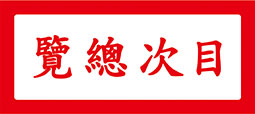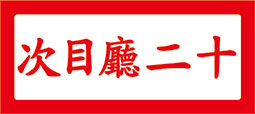Mr. K’ung Te-ch’eng (孔德成), former president of the Examination Yuan of the Republic of China, was the 77th generation descendent of Confucius from direct lineage. Countless admirers flocked to beseech his calligraphy. In his later years, his wrist grew weaker, it became harder to write large calligraphic characters. He asked Mr. Ts’ui Hsin-lin (崔信麟), father of Mr. Ts'ui Jen-hui (崔仁慧), to ghostwrite for him.
This article by Mr. Ts’ui Jen-hui fortunately preserves an anecdote of the art word. He also recounted how Mr. K’ung Te-ch’eng avoided a request to write a calligraphy piece for his ancestral home in Shantung, by reason of his deep empathy for the ideology and rectitude of President Chiang Kai-shek. At the time, President Chiang Kai-shek had already passed away for more than twenty years. It was true then that the loyalty and righteousness embraced by virtuous men of the past, did not deplete with time. Reflecting upon this, there is an abiding sense of penitence, loss and admiration.
Curatorial and Editorial Department
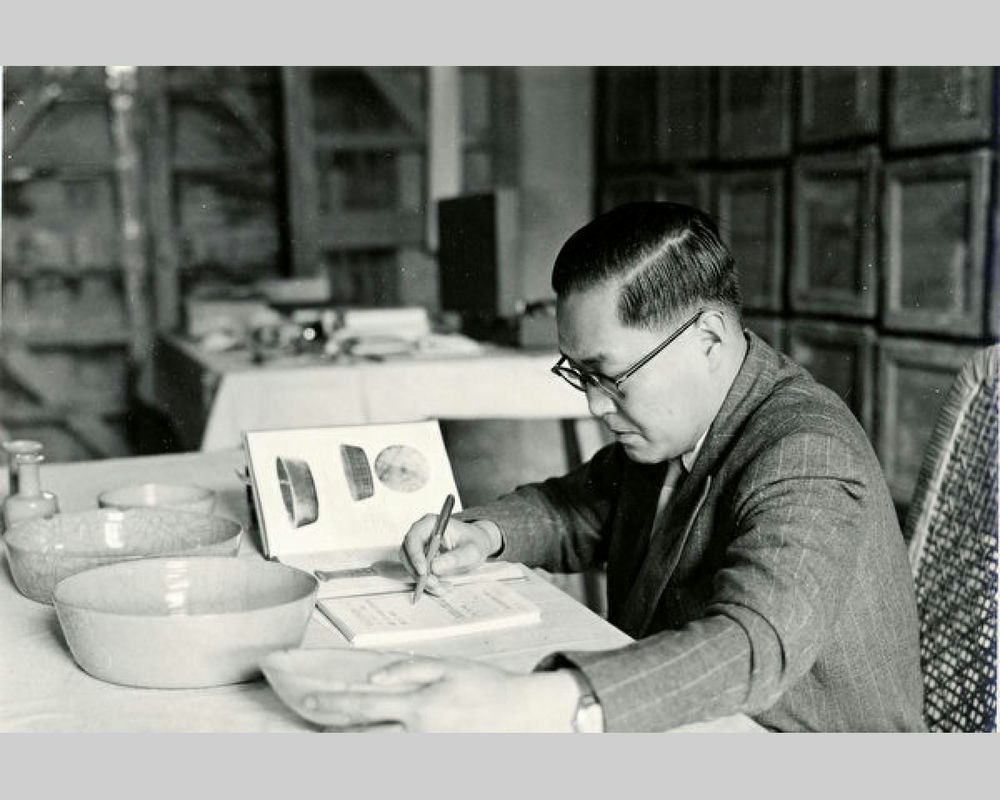
Duke Yen-sheng K’ung Te-ch’eng in the Taichung storeroom of the United Management Office of the National Central Museums when he was chairman in 1956. Photograph courtesy Chinese Association of Confucius
Mr. K'ung Te-ch'eng (孔德成 1920-2008), tzu Yü-ju, hao Ta-sheng, of the hereditary title Duke Yen-sheng, passed away in October 2008, aged eighty nine. Around 1986, my father Mr. Ts'ui Hsin-lin (崔信麟) met Mr. K'ung, when a friend introduced him to join the Shantung Fellow Residents Association, as he was a native of Huang-hsien, Shantung province. Mr. K'ung was the 77th generation descendent of Confucius from direct lineage, a native of Ch'ü-fu, Shantung province, and older than my father by ten years. Their acquaintanceship was formed because of their roots in Shantung, but a deeper friendship was forged due to their common interests in calligraphy.
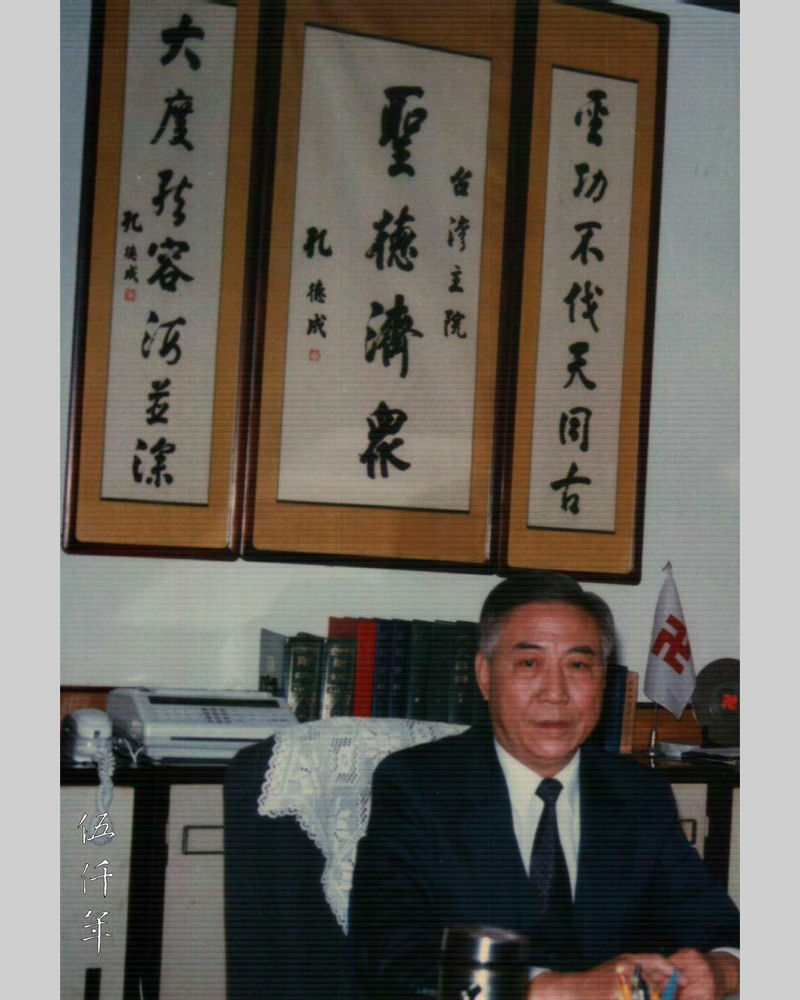
Mr. Ts’ui Hsin-lin in front of a set of calligraphy by Mr. K’ung Te-ch’eng at the office of Red Swastika Society
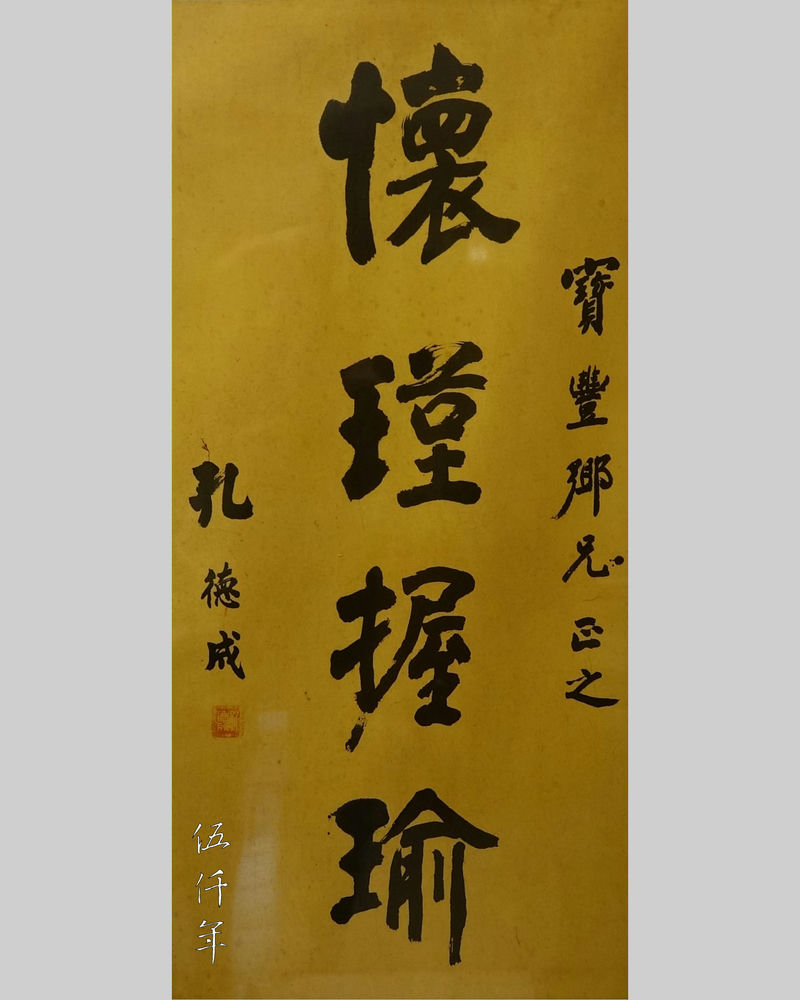
Regular script calligraphy by Mr. K'ung Te-cheng dedicated to Mr. Ts'ui Hsin-lin
In their first encounter at the Shantung Fellow Residents Association, my father recollected that he was among the many people lining up, to meet Mr. K'ung and to seek his calligraphy. My father was last in the line, when his turn came, Mr. K'ung put down his writing brush, and simply said that he was not going to write anymore, and added no more words. My father was perplexed, why did Mr. K'ung stop writing when he turned up? After a period of time, my father received notification to pay Mr. K'ung a visit. When they met, Mr. K'ung produced a small calligraphy piece with four characters: Huai-chin wo-yü (懷瑾握瑜) as a gift, and explained:
“I was tired and exhausted, I could not even hold the writing brush. If I pushed myself to write then, it would not be well executed. So I returned to recuperate, picked up the brush to write afterwards. I specially present this as a gift.”
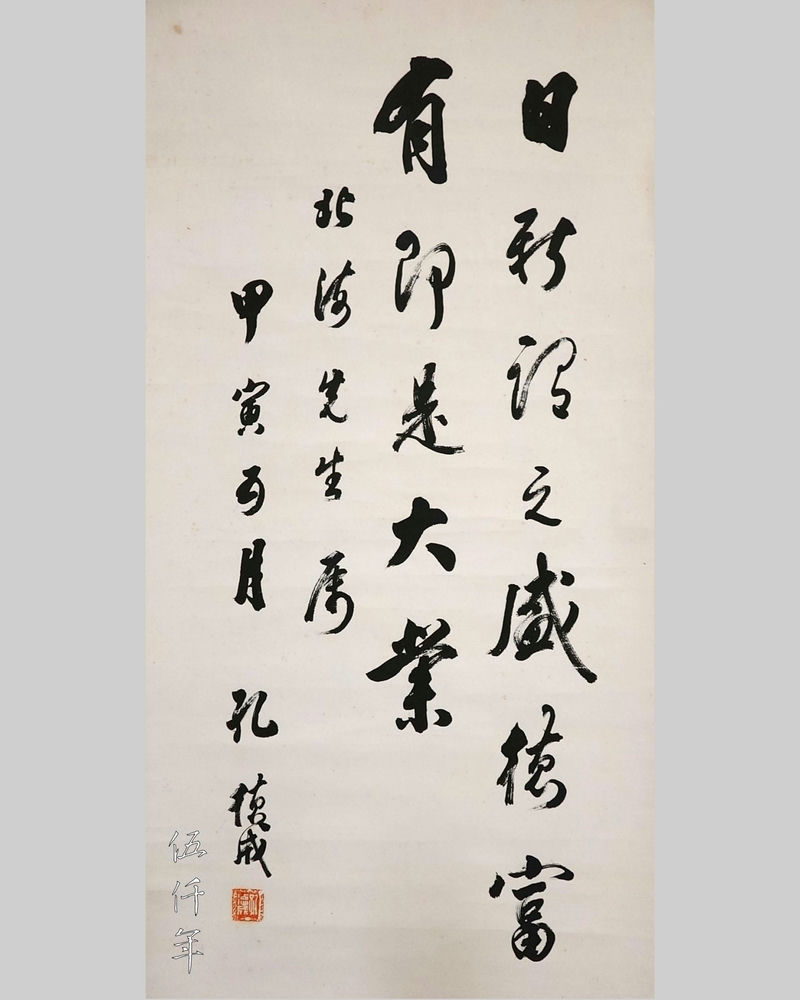
Cursive script calligraphy by Mr. K'ung Te-cheng dedicated to Mr. Ts'ui Hsin-lin
Afterwards, they conversed on a wide array of subjects, and became fast friends. They then saw each other regularly. The calligraphy of Mr. K'ung is robust, the brushstrokes are sturdy, it evolved from the style of Yen Chen-ch'ing (顏真卿 709-785) of the T'ang dynasty, his running script and cursive script employ spacing and density for variety, the beginning of a stroke to the finish is like dancing dragon. When he became old, it was difficult for him to write large characters. Mr. K'ung appreciated my father's calligraphy, he thought that the brushstrokes were expressive and the ink was wholesome. The characters appeared vigorous and charismatic. He once jokingly said to my father:
“Your calligraphy is better than mine, but I am better known than you are. What about us collaborating to enjoy good food and wine?”
So in an amusing conversation, it was decided that my father was to be the ghostwriter of Mr. K'ung.
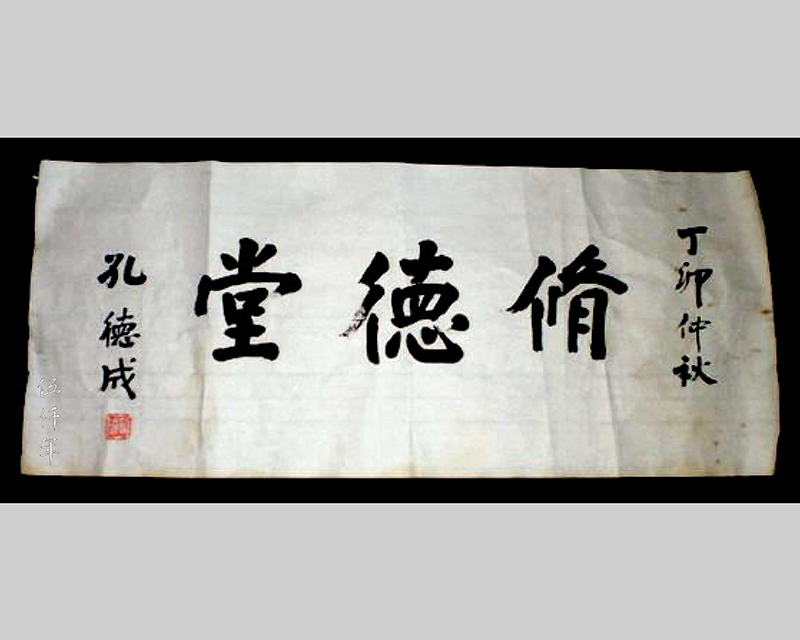
Regular script calligraphy ghostwritten by Mr. Ts'ui Hsin-lin on behalf of Mr. K'ung Te-cheng in 1987
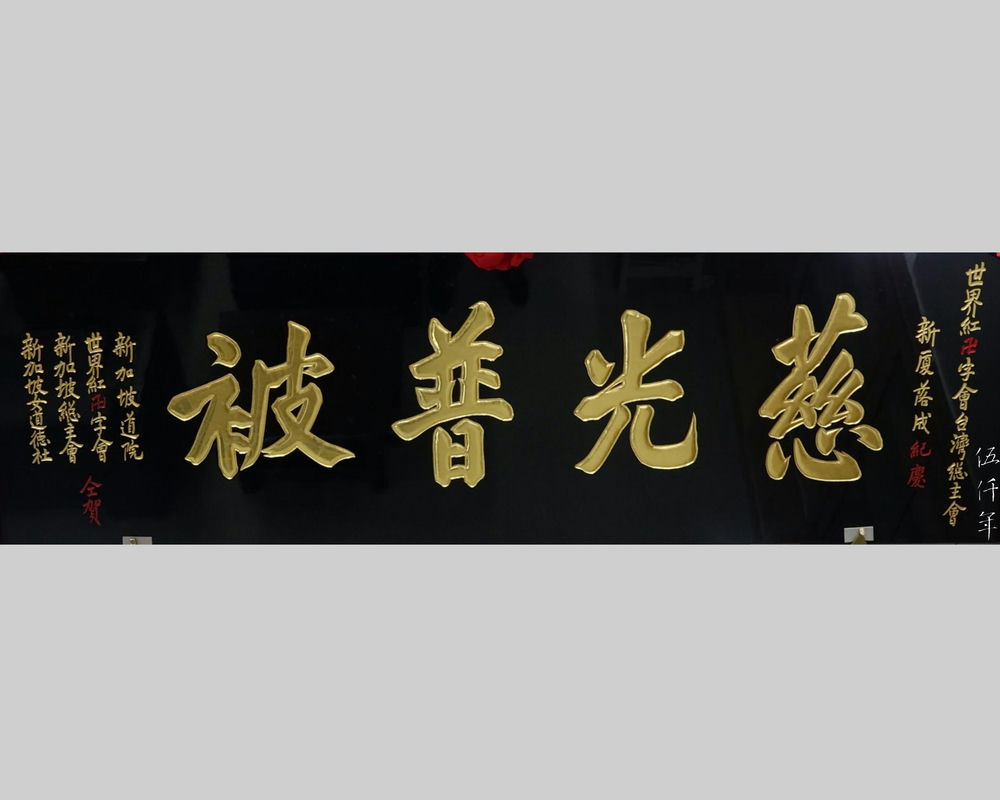
Regular script calligraphy engraved on wooden board at the Singapore office of Red Swastika Society, ghostwritten by Mr. Ts'ui Hsin-lin
Across the Taiwan Strait, the communist regime designated the elder sister of Mr. K'ung, Ms. K'ung Te-mao (孔德懋) as heir to the Confucius legacy. She deeply lamented that she did not receive any piece of calligraphy by his brother. At the time Prof. Li Tien-k'uei (李殿魁), Dean of the College of Liberal Arts, National Taiwan Normal University, was delighted to know that my father was friendly with Mr. K'ung. I once invited Prof. Li to lecture at the school I taught, his wife took part in many academic and cultural exchanges with institutions in Shantung province. Prof. Li asked Mr. K'ung to write some calligraphy pieces for the ancestral home of Confucius, Ch'ü-fu in Shantung, if all went according to plan, the locals could even apply to the communist regime to build a Confucius University, it seemed to be a scheme after all. But Mr. K'ung thought it was inappropriate, he instructed my father to ghostwrite for him, and said:
“It has been nearly fifty years since I followed Mr. Chiang (President Chiang Kai-shek) to Taiwan, if I write these calligraphy, my conscience will not be clear with Mr. Chiang. So you write them!”
Hence my father ghostwrote two horizontal pieces of calligraphy: K'ung Fu (孔府 The House of K'ung) and K'ung-tzu Ta-hsüeh (孔子大學 University of Confucius). Afterwards the local authorities in Shantung engraved these characters onto wooden boards, one was hung in the family mansion of Confucius, they took photographs and sent them to Taiwan. As for the University of Confucius, the communist education authority replied that there was already Chi-nan University in Shantung province, the principle of the one university for one province should not be contravened. The best they could do was to set up a Confucius Institute within Chi-nan University, and that was the end of the matter. A final anecdote about Ms. K'ung Te-mao. Her daughter K'ei-lan (柯蘭) became one of the 78th generation descendants of Confucius, opened a Ming-te Kuo-hsüeh Kuan (明德國學館 Ming-te Institute of Chinese Studies), a collaborative effort between Tientsin city and the Tientsin Office of Red Swastika Society. It lasted two years and closed.
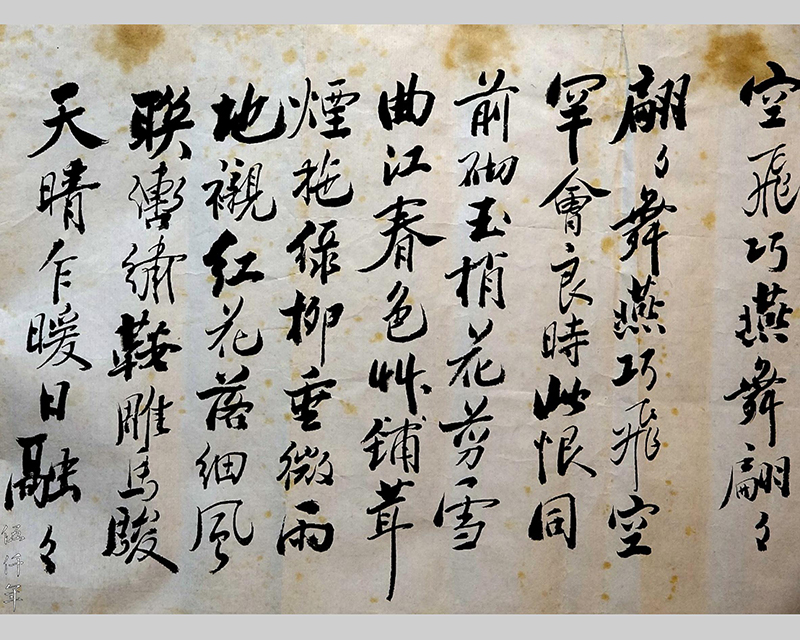
First section of poetry manuscript by Mr. Ts'ui Hsin-lin
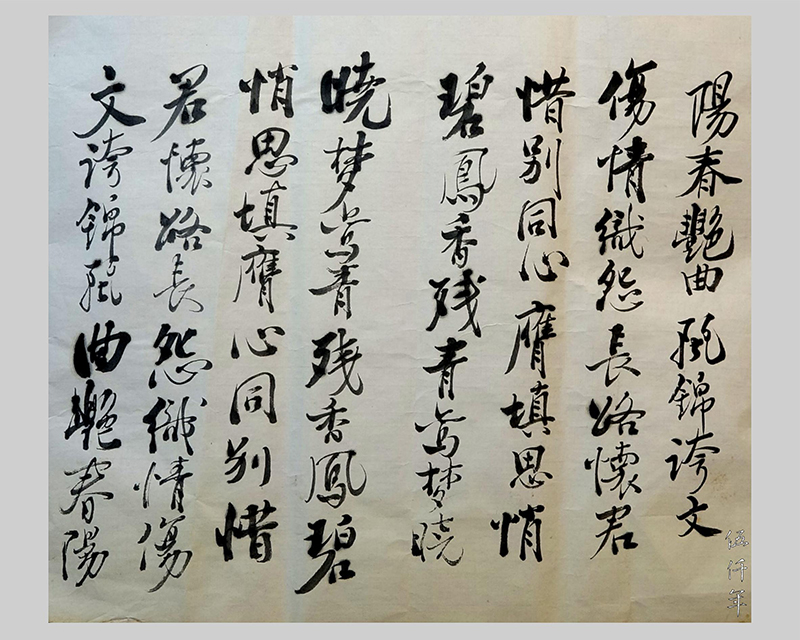
Second section of poetry manuscript by Mr. Ts'ui Hsin-lin
